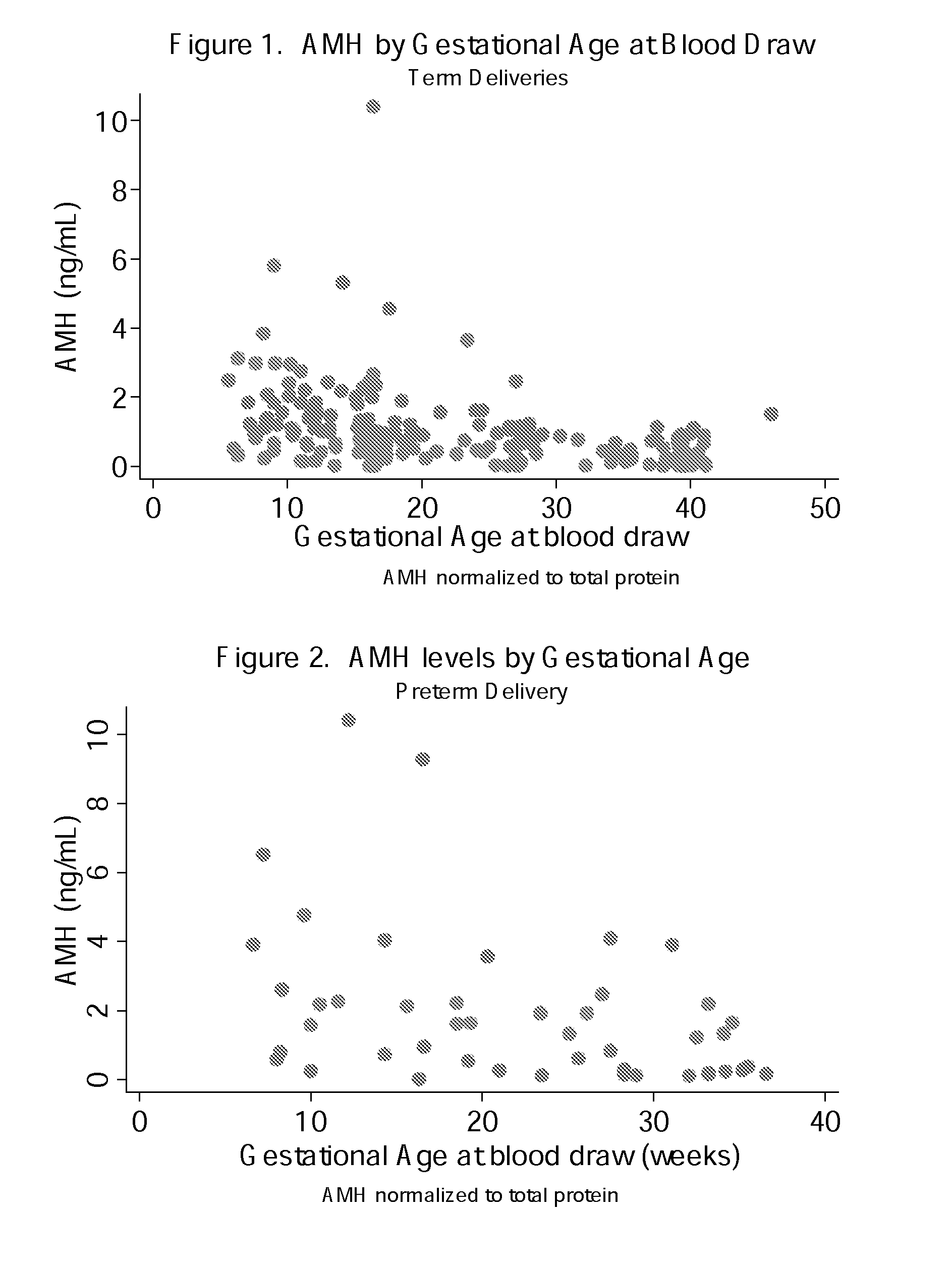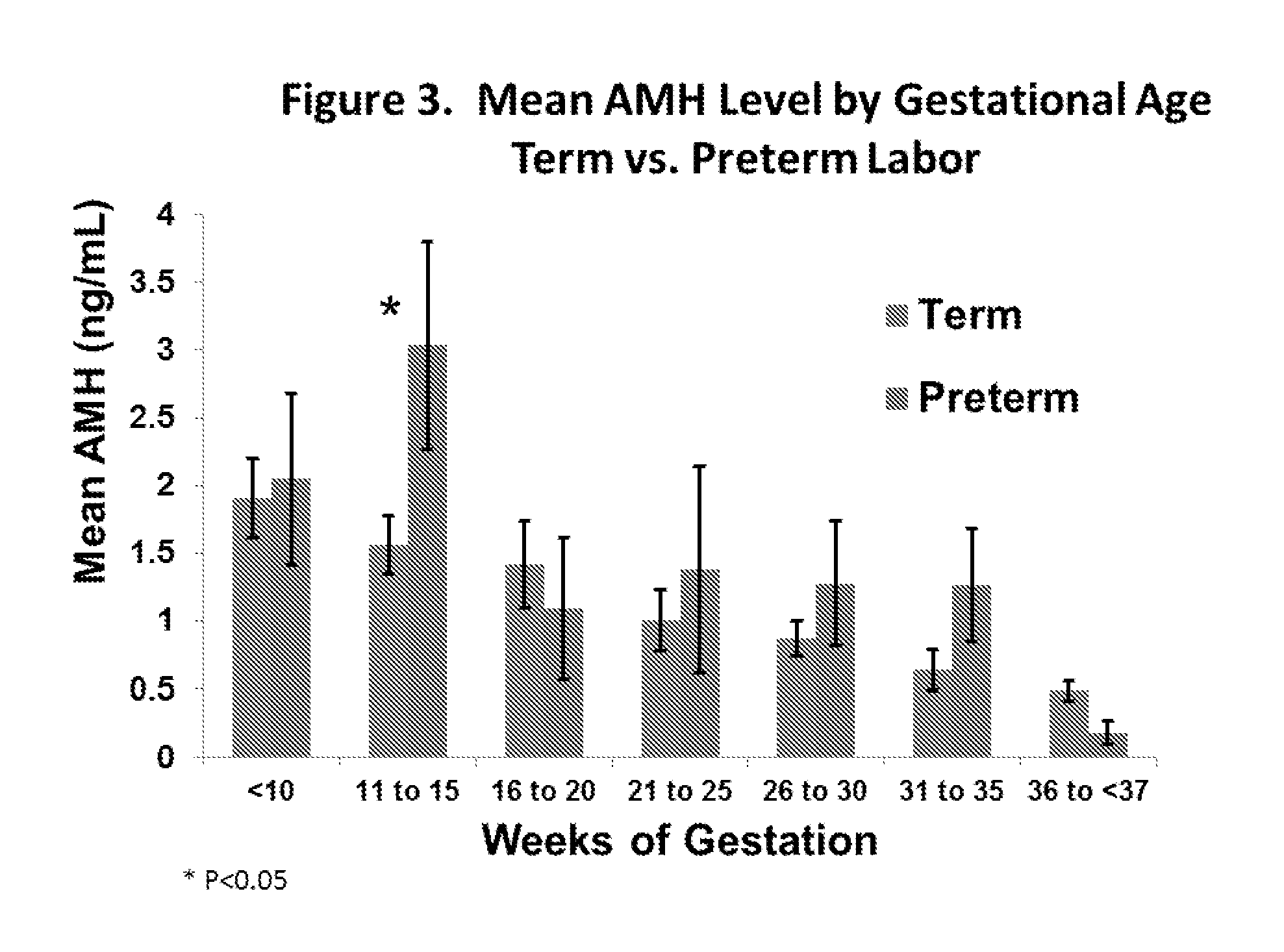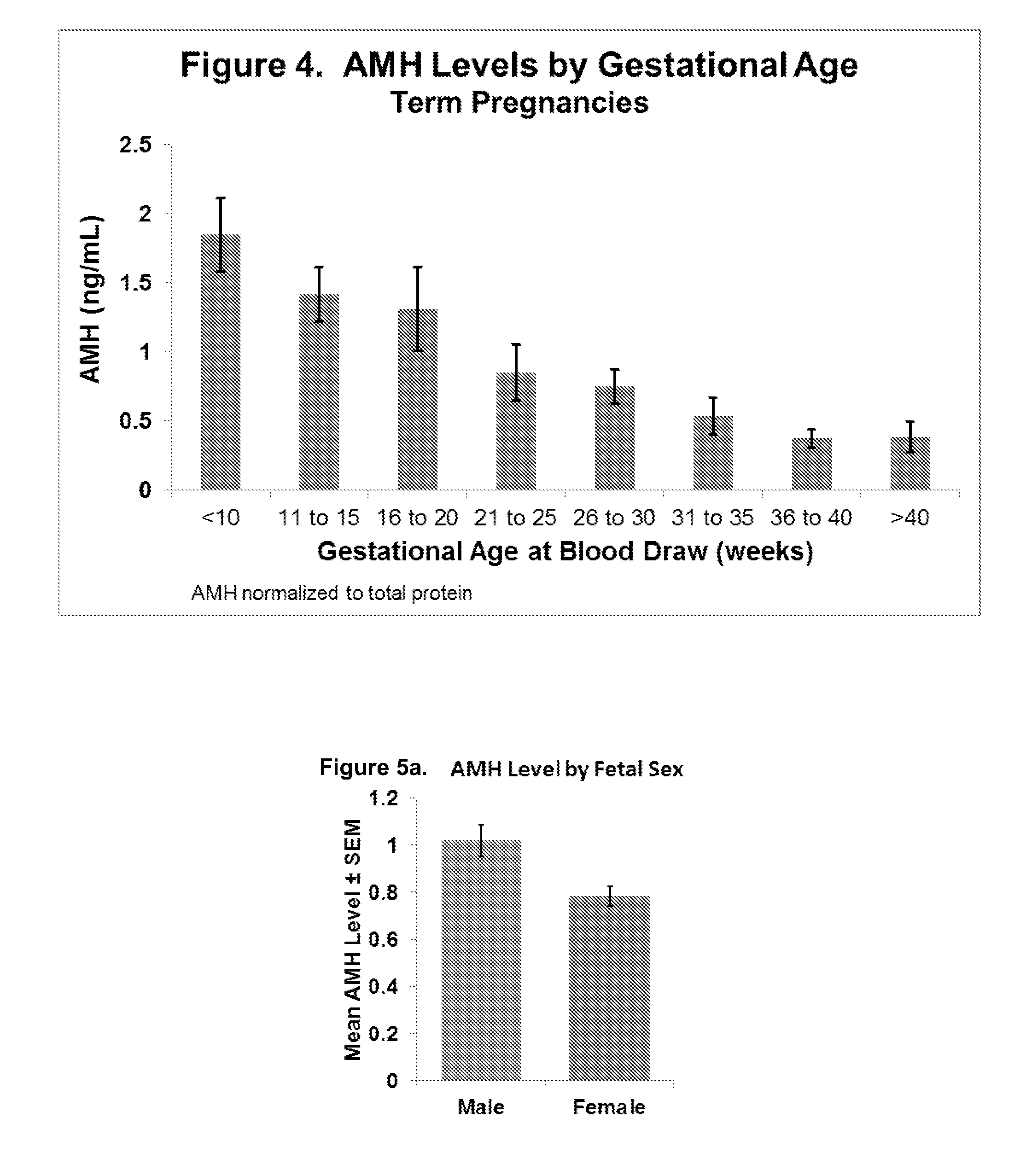Anti-mullerian hormone changes in pregnancy and prediction of adverse pregnancy outcomes and gender
a technology of anti-mullerian hormone and pregnancy, applied in the field of biological sciences, can solve the problem of inadequate evaluation methods of early feto-placental development, and achieve the effect of improving the quality of life and reducing the risk of pregnancy death
- Summary
- Abstract
- Description
- Claims
- Application Information
AI Technical Summary
Benefits of technology
Problems solved by technology
Method used
Image
Examples
example 1
[0164]Two hundred and fifty five samples were acquired from 191 women that were randomly distributed across all gestational ages (range 5.6 to 41.1 weeks). Outcome information was available on 243 (94%) of these women; 197 had term deliveries, and 46 had preterm deliveries. Thirty-five of the samples were collected prior to 10 weeks, 44 between 11-15 weeks, 62 between 16 and 20 weeks, 20 between 21 and 25 weeks, 29 between 26 and 30 weeks, 21 between 31 and 35 weeks, 29 between 36 and 40 weeks, and 16 at greater than 40 weeks. Sixty-four women were sampled more than one time in the pregnancy.
[0165]Results from the full cohort as well as the two sub-cohorts are listed in Table 1. The analysis is adjusted for multiple measures and maternal age. Significance was found in all comparisons. The mean gestational age for both normal pregnancy and preterm subjects is shown in the legend of the table.
TABLE 1Mean AMH Levels adjusted for maternal age and multiple measuresMaleFemaleAll gestation...
example 2
[0170]Methods:
[0171]167 samples from 112 women were obtained with gestational ages (GA) between 5.6-41.0 weeks. 82 samples from 54 women with outcome data were also analyzed. AMH was measured using AMH GenII Immunoassay (Beckman Coulter). AOO included preterm labor (PTL), premature rupture of membrane (PPROM), and preeclampsia / intrauterine growth restriction (pre-e / IUGR). Multivariate regression was used for analysis, controlling for multiple measures and maternal age.
[0172]Results:
[0173]AMH measurements were grouped by trimester. Mean AMH levels in the entire dataset declined significantly between the 1st and 3rd trimesters (p<0.05).
example 3
[0174]One hundred and thirty two samples were obtained from women and obstetrics outcomes were analyzed. Women were divided into two groups: those that delivered after 37 weeks (normal outcome) and those who delivered prior to 37 weeks (preterm labor). AMH levels were measured and results were analyzed. Women in the two groups were similar with the exception of the time of delivery (38 w 1 day in normal outcomes, 34 w 4 days in the preterm labor outcomes) and the average AMH level for all gestational ages. In women who had preterm labor, AMH levels were significantly higher until 20 weeks of pregnancy. AMH levels after 20 weeks did not differ between the two groups. See Table 2. This may indicate that high AMH levels prior to 20 weeks of pregnancy can predict women who will go on to experience preterm labor, and would be classified as high risk. Close monitoring of these patients and possible therapeutic intervention may be applied to help prevent preterm birth.
TABLE 2Normal Outcome...
PUM
 Login to View More
Login to View More Abstract
Description
Claims
Application Information
 Login to View More
Login to View More - R&D
- Intellectual Property
- Life Sciences
- Materials
- Tech Scout
- Unparalleled Data Quality
- Higher Quality Content
- 60% Fewer Hallucinations
Browse by: Latest US Patents, China's latest patents, Technical Efficacy Thesaurus, Application Domain, Technology Topic, Popular Technical Reports.
© 2025 PatSnap. All rights reserved.Legal|Privacy policy|Modern Slavery Act Transparency Statement|Sitemap|About US| Contact US: help@patsnap.com



